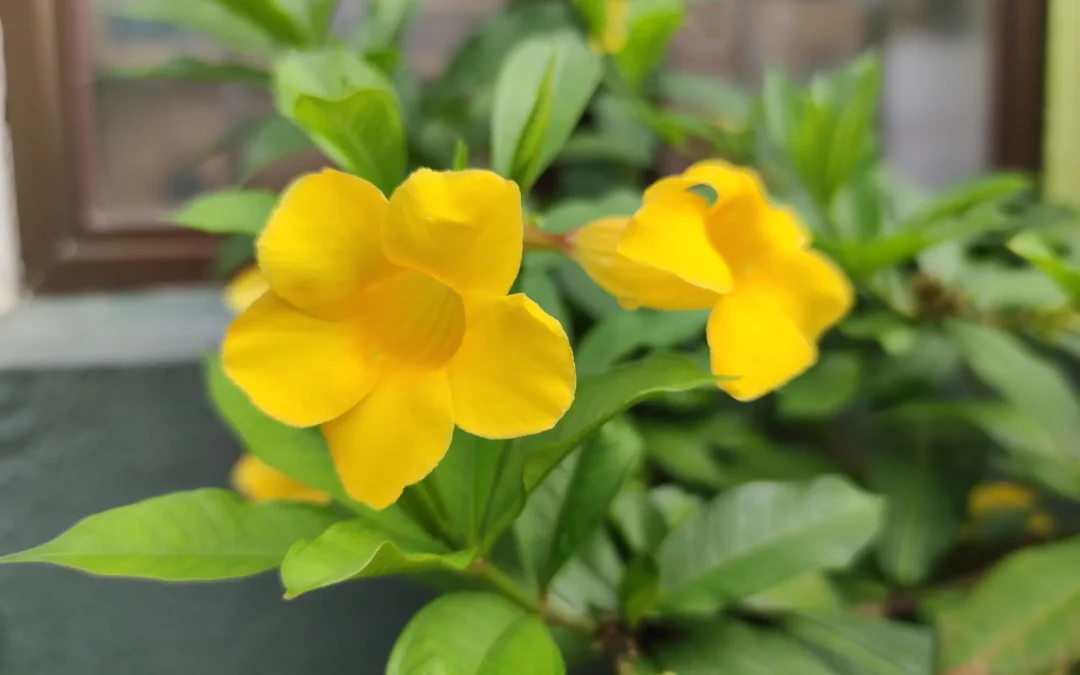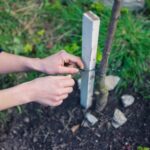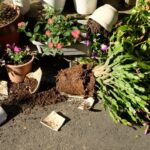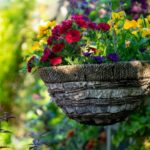Let’s not waste another moment and get straight into our Allamanda Care advice
How Do You Maintain The Allamanda Plant?
The allamanda (Allamanda cathartica) is a tropical flowering shrub often used as a houseplant. It is known for its bright yellow flowers and requires a lot of sunlight and water to grow properly.Allamanda care is easy when you know how to take care of this beautiful plant, which you’ll learn in how in this article.
Allamanda plants are a beautiful addition to any garden, bringing in their colorful personality. The growing season is best during the summer and fall. As the colder months approach, watering needs diminish and overall care for the plant. We offer our home landscaping services if you’re uncertain where to plant your allamanda or want to revamp your entire garden.
Allamanda plants are native to brazil but have found their way into the gardens of many U.S. States, especially Florida. The bright allamanda flower is also the official flower of Canovanas, Puerto Rico.
Here are some quick tips on how to maintain an allamanda plant:
- Make sure the plant has plenty of sunlight. It needs at least 4-6 hours of direct sunlight per day.
- Water the plant regularly, keeping the soil moist.
- Fertilize the plant every two weeks with a balanced fertilizer.
- Prune the plant regularly to keep it healthy and compact.
- Repot the plant every year or when it becomes too large for its pot.
- The allamanda plant is mildly toxic, so it’s important to keep it away from children and pets if possible.
Does Allamanda Need Full Sun?
Allamanda is easy to grow and does well in full sun or partial shade. It can be used as a ground cover or trained on a trellis. Allamanda produces trumpet-shaped flowers in shades of yellow, orange, and red. For your allamanda plant to grow abundantly, it needs 4-6 hours of bright, full sun throughout the day. They can handle more sunlight than that, but 6 hours or so should be just enough for your allamanda plant to thrive.
How Do You Make Allamanda Bushy?
Allamanda grows 2 to 5 m tall, with a woody stem and opposite, glossy green leaves. The flowers are trumpet-shaped, 5–10 cm in diameter, yellow or white, often with a red or purple throat. Allamanda is an important ornamental plant in the subtropics and tropics of the Americas. It is used as a ground cover and small tree, shrub, or vine.
In order to keep this beautiful plant bushy and full, you’ll need to properly prune it of any dead or dying leaves. Removing these leaves allow new growth to occur, filling it with younger, healthier leaves. You can also propagate small portions of this plant and replant them around the established allamanda once they have grown roots. This will create a wider, fuller plant.
Why is My Allamanda Not Blooming?
There are a few reasons why an allamanda may not be blooming.
One reason is that the plant may not be getting enough sunlight. Try placing your plant near a window throughout the day to absorb more sunlight. If your home doesn’t bring in a lot of sun you can try moving your plant outside. If your allamanda is in the garden, make sure there is nothing blocking it from the sunlight.
Another reason is that the plant may not be getting enough water. If you believe you’re watering your plant enough, try to check the soil periodically throughout the week. You can even try completely soaking the soil of your plant when watering it. If you do this, make sure you give it enough sunlight to allow the soil to dry completely, otherwise mold can grow and damage the roots of the Allamanda.
A third reason is that the plant may not be getting enough fertilizer. Some people choose not to use fertilizer in their plants, but if a plant isn’t blooming, there could be an issue with the soil quality. Fertilizer will help give your plants the nutrients it needs to be healthy and continue blooming.
If an allamanda is not blooming, it is a good idea to check these things to see if they are the problem and correct them if necessary. Sometimes it will take a bit of trial and error in order to remedy your plant, but the above solutions should do the trick.
How to Propagate Allamanda
Allamanda (Allamanda cathartica) is a tropical plant that can easily propagate from cuttings. New plants will grow quickly and can be used to fill in bare spots in the garden or add color to a flower bed. Allamanda can also be grown as a houseplant. Here’s how to propagate allamanda:
- Cut a healthy stem from an allamanda plant with a sharp knife. Make sure the stem has at least two leaves attached.
- Remove the leaves from the bottom of the stem.
- Place the stem in a glass of water and let it soak for 24 hours.
- Fill a pot with moist potting soil and place the allamanda stem in the pot so that the top of the stem is sticking out of the soil.
- Place the pot in a sunny spot and water it every day.
- After two weeks, you should see new leaves growing from the stem. Cut off the leaf buds just before they form into new allamanda plants.
- Eventually, allamanda plants will form new stems and bloom.
How Much Water Does Allamanda Need?
Allamanda needs plenty of water to stay healthy; it may need to be watered twice a day during hot, dry weather. Overwatering allamanda can cause root rot and wilt. It’s important to make sure that your plant’s soil has enough time to release enough water in between watering. Doing a simple hand test to check the dampness is all you should need to do in order to know when your plant needs water. If your plant has been neglected or is in an area that gets hot and dry, give it some time to recover before you water it again. For a regulated water system, we can help install an irrigated sprinkler system to keep your garden efficiently watered.
Allamanda Plants for Sale
Take advantage of this guide by growing some Allamanda of your own!
Visit our nursery at Troy Tropics and turn your backyard into an outdoor oasis.
Our team of greenery experts can help you decide on the best plants for your home. Contact us through our online form or call us directly at (941) 923-3756.






